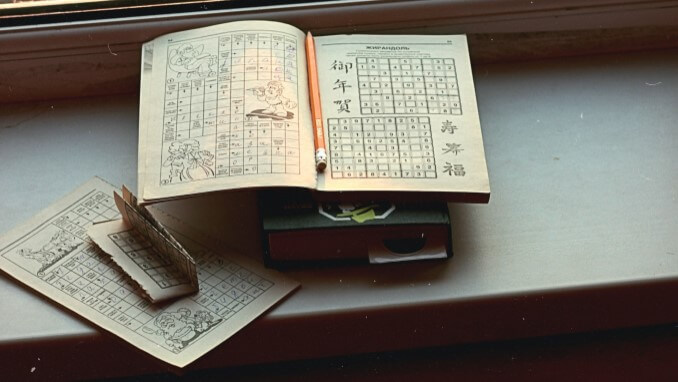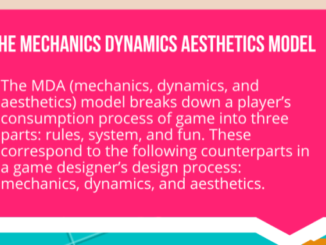
Study after study on the Google and Apple mobile app stores reveals that games are the largest category by downloads and usage, making close to 1/5th of the entire database. In 2022, the cumulative number of games on these stores is expected to surpass 1 million! Mobile games are shaping new user habits, and new genres have spawned to cater to these desires.
Interestingly, the 2nd and 3rd categories are education and business respectively. Food for thought – given there is an indication that the greatest demand from phone apps is that of entertainment, learning, and productivity respectively, could there be a way to merge these in some way?
A significant section (~58%) of mobile games are puzzles, mostly to be solved in a single-player mode. Also fondly called brain training games, they are shown to improve cognitive functions, reduce anxiety, enhance memory, etc. There are different factors behind the success and effectiveness of such games, two of which will be discussed in this article.

Simplicity, The Ultimate Sophistication – Sudoku
Hitting its peak of popularity in the mid-2000’s, Sudoku was on every second newspaper reader’s mind as they were opening the pages to find the puzzles section. Next to the crossword and jumbled words would be Sudoku, a numbers-based pattern puzzle that takes just a minute to get familiar with – and at least a few weeks to properly conquer.
Sudoku players testify to the efficacy of this game – they feel more relaxed after playing a game or two. Sudoku has surprising benefits beyond mathematical confidence – from building focus to dealing with wrong choices, it brings a growth mindset to its loyal audiences. The puzzle, which originated in Europe before surging in Japan, has simple secrets in its recipe that make it an instant hit.
The first of these secrets is the simplicity of trying the game, and it goes beyond the simplicity of the rules. Most puzzles involving numbers need some mathematical knowledge, the bare minimum being operations like addition and subtraction. In Sudoku, however, no prior knowledge is required. The game is driven completely by logic – with or without mathematical experience, the game has a similar level of challenge for everyone. Even knowing the sequence of numbers from 1-9 is not necessary – they are simply different symbols whose order in the number system does not matter much inside the game.
The second factor is the continuous stream of dopamine hits the player receives, making correct entries. Providing small and rapid completion checkpoints to a player keeps them on the right track. Once they know they are moving in the right direction, they get a sense of confidence and are more motivated to continue (and finish) the puzzle. Small successes like correctly completing a row, a column, or a smaller box in the game are great ways to motivate the player and make them feel good during the game. If it were the opposite – if you get to know you are playing the game right only upon completion of the 9*9 grid, it might be too long of an exercise to correct your mistakes or enjoy the parts you got right.
Sudoku is highly engaging, to the extent that players wait for the puzzle on an almost daily basis. They even collect old newspapers or archives from other providers, just to solve a different puzzle once in a while. Veteran players of the game swear by playing the game with a pencil, so that prior errors can be erased – a direct result of seeing visible results inside the game.

Atomic Habits Put To Practice – Wordle
Wordle was the most popular puzzle game from last year, bringing a positive and welcome change to the general netizen conscience. You could not spend a single day on Instagram or Twitter without seeing a 5-unit wide set of emoji squares, in three different colors, shared with captions like “phew, almost blew this one” and “is that even a word?”. Curiosity often drove more audiences to play the game, enjoy the simplicity of the puzzle, and endorse it even further. This resulted in a virality of unprecedented scale, taking the game to 2 million people in just a matter of 3 months!
Games on language have existed for a long time; from Scrabble to Spelling Bee, they engage players in application of vocabulary skills on different levels. What Wordle did differently came to light after its spinoffs failed to achieve similar success – variations where you get unlimited puzzle challenges instead of one per day did not take off, and neither did the ones where the word length varies every day. The brilliance of Wordle can be attributed to some key design principles, which are resonant with James Clear’s ideologies from his excellent book Atomic Habits.
You do not rise to the level of your goals. You fall to the level of your systems.
– James Clear, author of Atomic Habits
Clear opined that since man is a creature of habit, most of our decisions are guided by how our semi-conscious mind reacts to situations. By slowly building habits, we can drastically improve our lives in the long run. The tenets of making consistent habits have been described in his book, one of which is consistency. Consistently and regularly putting a skill to practice, even for a small objective, yields great results – something the Wordle puzzle can be applauded for.
By making one problem and just one problem available to a player for every day, the task is so well-defined and small-scale that it feels almost foolish to skip the puzzle. Moreover, the amount of challenge in these problems is not too high, and yet deceptive enough to ensure exertion is required. The stakes get higher with every try, and the real-time feedback by coloured squares guide the player to the correct word effectively. Moreover, sharing the puzzle results makes us feel more involved in a social movement. In fact, it created a culture of accountability – people felt they OUGHT to share their results, bringing to life another aspect of Clear’s ideas.
The social and mental aspects of game design make a large difference to the players’ experience. You can engage and hook your players with more meaningful rewards and challenges, for which they keep returning to the game not as an endless empty pursuit, but for self-improvement and mental refinement. There is a lot of potential in exploring these opportunities, and we hope this article gave you some actionable insights to put you ahead in your game design journey.
- Social & Emotional Learning (SEL) with Tomo Club - 7th March 2023
- The Power of Compounding in Games - 14th February 2023
- Playing your Cards Right – Walkman Lab - 13th September 2022
- Social & Emotional Learning (SEL) with Tomo Club - 7th March 2023
- The Power of Compounding in Games - 14th February 2023
- Playing your Cards Right – Walkman Lab - 13th September 2022





Be the first to comment